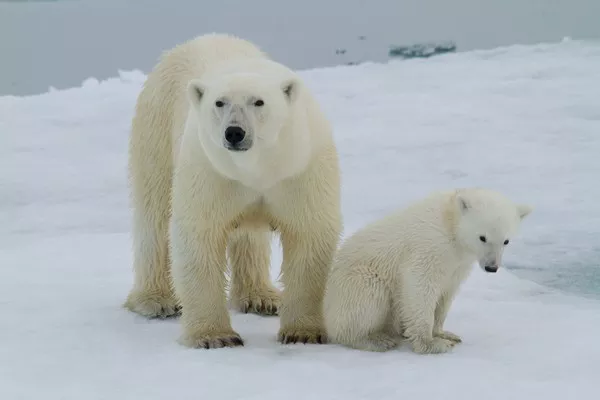The natural world is a diverse tapestry, with creatures inhabiting an array of environments ranging from the frigid depths of the Arctic to scorching deserts and the crushing pressures of the deep sea. In this exploration, we delve into the fascinating lives of 10 animals that have not only adapted but thrive in extreme environments. From extreme temperatures to hostile terrains, these resilient species showcase the remarkable adaptability of life on Earth.
10 Animals That Thrive in Extreme Environments
1. Arctic Terns:
The Arctic Tern, a seemingly delicate seabird, defies its appearance by undertaking one of the most incredible migrations in the animal kingdom. These birds travel up to 44,000 kilometers annually, flying from the Arctic to the Antarctic and back. Negotiating both freezing temperatures and long flights, Arctic Terns showcase unparalleled endurance.
2. Polar Bears:
Polar Bears, iconic symbols of the Arctic, have evolved to masterfully navigate the frigid expanses of sea ice. Adapted to endure extreme cold, they possess thick fur, insulating layers of blubber, and powerful limbs to traverse vast distances. The Arctic’s apex predators, Polar Bears exemplify the epitome of survival in extreme cold.
3. Camels:
In the blistering heat of deserts, camels emerge as the epitome of adaptability. These remarkable creatures have evolved to survive both scorching days and freezing nights. Their humps store fat, not water as commonly believed, providing a reservoir of energy to endure extended periods without food and water.
4. Water Bears (Tardigrades):
Tardigrades, often referred to as water bears, are microscopic animals known for their resilience to extreme conditions. These tiny creatures can endure radiation, extreme temperatures, and even the vacuum of space. With the ability to enter a state of cryptobiosis, they can survive harsh environments that would be fatal to most other life forms.
5. Tube Worms:
Found in the pitch-black depths of the ocean, tube worms thrive near hydrothermal vents, where scalding water and intense pressure characterize their environment. These remarkable organisms have formed a symbiotic relationship with chemosynthetic bacteria, enabling them to survive in a habitat that seems inhospitable to most life forms.
6. Fungi in Chernobyl:
In the aftermath of the Chernobyl nuclear disaster, researchers discovered fungi thriving in the highly radioactive environment. These fungi display a remarkable resistance to radiation, challenging our understanding of the limits of life. Their presence in such extreme conditions provides insights into the potential adaptability of various organisms.
7. Bar-headed Geese:
Bar-headed Geese undertake one of the most challenging migrations, flying over the Himalayas, the world’s highest mountain range. These birds have adapted to high-altitude conditions, navigating thin air and extreme cold. Their ability to soar at altitudes that would challenge most creatures showcases nature’s astonishing feats.
8. Extremeophiles in Deep-Sea Hydrothermal Vents:
Deep-sea hydrothermal vents, marked by extreme pressure, darkness, and high temperatures, harbor a diverse community of organisms collectively known as extremeophiles. From giant tube worms to bacteria, these life forms thrive in conditions once considered inhospitable, highlighting the resilience of life in Earth’s most remote places.
9. Snow Leopards:
Inhabiting the rugged and high-altitude landscapes of Central Asia, Snow Leopards are masterful predators adapted to the challenges of mountainous terrains. Their thick fur provides insulation against extreme cold, while their powerful limbs and agile bodies allow them to navigate steep slopes with ease.
10. Mangrove Killifish:
Mangrove Killifish, found in oxygen-deprived waters of mangrove swamps, have evolved a unique survival strategy. These small fish can tolerate extreme fluctuations in salinity and are capable of breathing air when oxygen levels in the water are insufficient. Their adaptability to challenging conditions exemplifies the diversity of life in specialized environments.
See Also: 10 Biggest Mammals On Earth
Conclusion:
The remarkable adaptability of animals to extreme environments showcases the resilience and ingenuity of life on Earth. From the soaring heights of the Himalayas to the crushing pressures of the deep sea, these creatures have evolved unique traits that allow them not only to survive but to thrive in conditions that challenge the limits of existence. As we delve into the lives of these 10 remarkable animals, we gain a deeper appreciation for the diverse strategies life employs to conquer the harshest realms our planet has to offer.
You Might Be Interested In:























